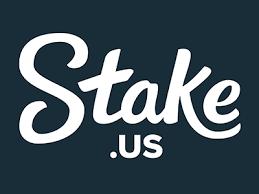How To Monetize a New Blog
Starting a new blog can be an exciting endeavor, a creative outlet where you can share your thoughts, ideas, or expertise with the world. However, blogging is not just about self-expression. With the right strategies and a bit of patience, you can turn your blog into a profitable venture. Here's a guide on how to monetize a new blog.
Firstly, before you can think about monetizing, you need to create valuable content. Your blog needs to offer something that people want, whether that's insightful information, practical advice, or entertaining stories. The quality of your content is the main factor that will attract and retain readers, so make sure it's well-researched, well-written, and well-presented. High-quality content is also more likely to rank well in search engine results, increasing your visibility and attracting more traffic to your blog.
Once you have a steady flow of quality content, one of the most straightforward ways to start monetizing your blog is through advertising. One of the most popular advertising networks is Google AdSense. Once you sign up and your site is approved, Google will start displaying relevant ads on your blog. You'll earn money every time a visitor clicks on these ads. However, bear in mind that this method typically requires a high volume of traffic to generate substantial revenue.
Affiliate marketing is another common way to monetize a blog. This involves promoting other companies' products or services in your blog posts. Whenever a reader clicks on the affiliate link and makes a purchase, you earn a commission. Amazon Associates is one of the most well-known affiliate programs, but many other companies offer similar opportunities. The key to successful affiliate marketing is to promote products that are relevant to your content and useful to your readers.
Selling your own products or services is another option. If you're an expert in a particular field, you could write an e-book or create an online course and sell it on your blog. Alternatively, if you're a skilled craftsman, you could sell your handmade products. Or if you offer a professional service like graphic design or consulting, you can use your blog to attract potential clients.
Sponsored posts are another way to monetize your blog. As your blog grows in popularity, companies may be willing to pay you to write posts promoting their products or services. However, it's important to disclose sponsored content to your readers and to maintain your integrity by only promoting products that you believe in and think would benefit your readers.
A donation button can also be a source of income, especially if your blog caters to a niche community that values your content. Websites like Patreon allow bloggers to receive regular donations from their readers. In return, bloggers often provide exclusive content or perks to their patrons.
Another potential revenue stream is paid memberships or subscriptions. If you consistently produce high-quality content, your readers might be willing to pay for early access to your posts, exclusive content, or an ad-free reading experience. Websites like Substack or WordPress offer tools to help bloggers set up paid subscriptions.
Lastly, you can monetize your blog by offering freelance writing services. Once you've established a portfolio of well-written blog posts, potential clients may be willing to hire you to write content for their own websites.
In conclusion, monetizing a new blog requires a combination of high-quality content, strategic marketing, and patience. It's unlikely that you'll start making money immediately, but with consistency and dedication, your blog can become a significant source of income. Whether you choose to monetize through advertising, affiliate marketing, selling products, sponsored posts, donations, subscriptions, or freelance writing, remember to stay true to your voice and to provide value to your readers. That's the key to a successful and profitable blog.







Comments